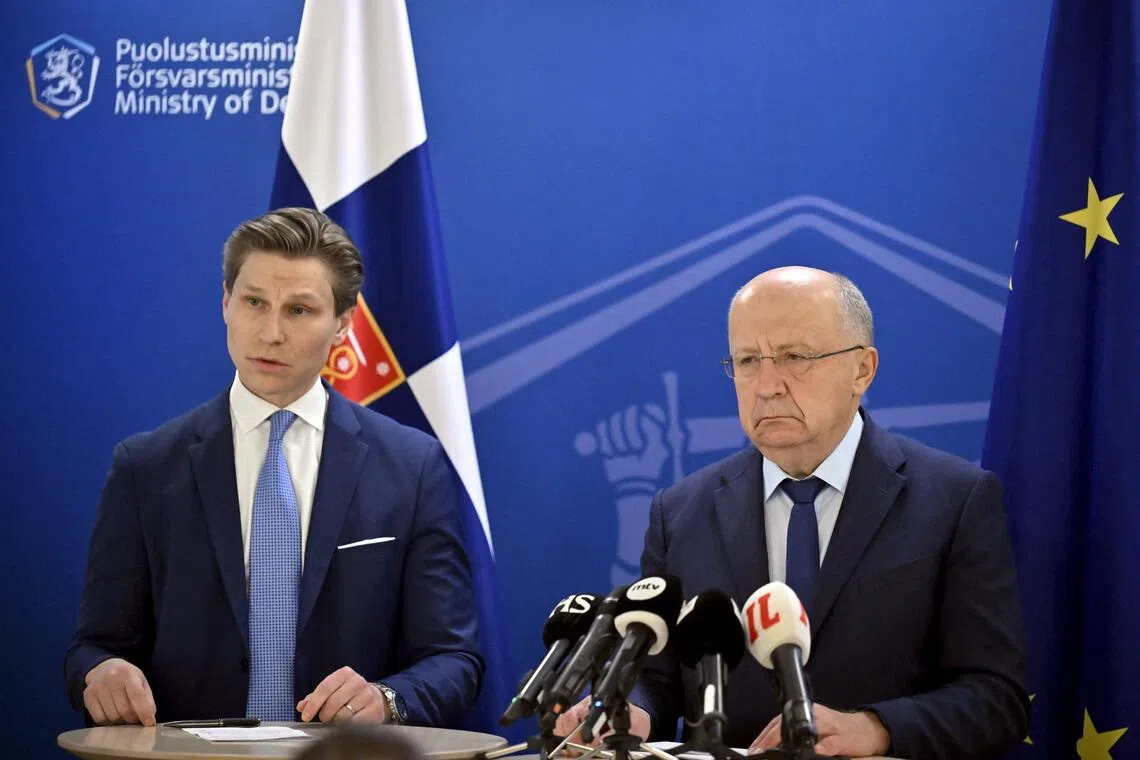EU eastern states agree on need for ‘drone wall’, bloc’s defence chief says
Sign up now: Get ST's newsletters delivered to your inbox

EU Defence Commissioner Andrius Kubilius (right) taking part in a Sept 26 press briefing with Finnish Defence Minister Antti Haekkaenen.
PHOTO: AFP
Follow topic:
- EU's eastern flank nations agreed to create a "drone wall" with advanced technology to counter increased drone activity and security concerns.
- The "drone wall" will be part of a broader Eastern Flank Watch, including ground defences and maritime security, requiring EU industrial policy.
- EU leaders will discuss funding in October, focusing on detectors, surveillance integration, jamming, and interception improvements.
AI generated
HELSINKI - Countries on the European Union’s eastern flank have agreed on the need for a “drone wall” with advanced detection, tracking and interception capabilities, EU Defence Commissioner Andrius Kubilius said on Sept 26.
Drones now play a major role in the war in Ukraine,
“Russia is testing the EU and Nato, and our response must be firm, united, and immediate,” Mr Kubilius told reporters in Finland, after a videoconference with defence ministers mostly from the EU’s eastern flank and representatives of Ukraine and Nato.
Participants have agreed to move from “discussions to concrete actions” and that the planned “drone wall”
“We shall look how to build a comprehensive European Union industrial policy and financial toolbox to make the shield a reality,” he told a press conference.
Mr Kubilius gave no details on funding, but an EU official told Reuters that EU heads of state and government were expected to hold “intensive” discussions on the issue in October.
Representatives from Bulgaria, Estonia, Finland, Latvia, Lithuania, Poland, Romania, Hungary, Slovakia and Denmark attended the Sept 26 videoconference.
Mr Kubilius stressed the need to develop additional capabilities and said a detailed technical road map would be drawn up with national experts.
Establishing a network of detectors must be a first priority, the commissioner said, adding that surveillance systems should be integrated and capabilities in areas such as jamming and drone interception improved.
Around 20 Russian drones entered Polish airspace beef up defences
This week, drone incursions forced several airports, both civilian and military, to shut down temporarily in various parts of Denmark.
Its defence minister branded the drone sorties
Russia denied any involvement in the Danish incursions. REUTERS

